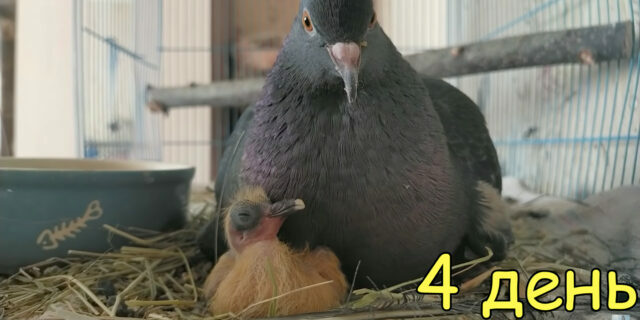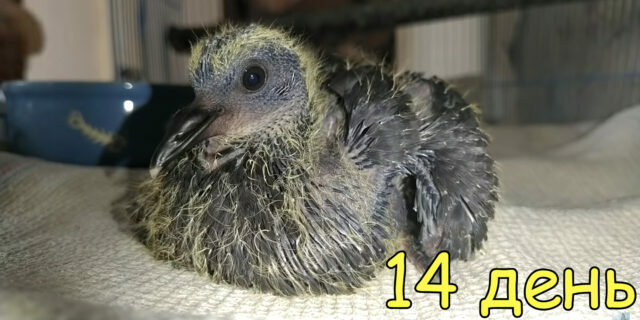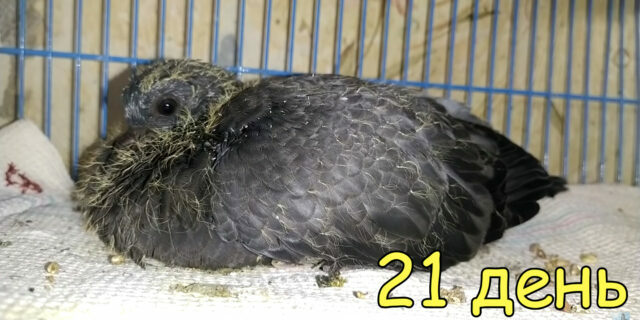10 embarrassing questions about pigeons: ornithologist Yulia Karagodina answers
Miscellaneous / / August 28, 2023
We have collected everything you wanted to know, but were too shy to ask.
In the new series Articles by well-known experts answer questions that are usually embarrassing to ask: it seems that everyone already knows about it, and the questioner will look stupid.
In this article we will talk about birds, without which it is difficult to imagine the urban landscape. They are so familiar that people do not even think about their existence until they wash the car or take the toddler out for a walk.
Ornithologist Yulia Karagodina told Lifehacker what Super abilities pigeons have why it is better not to touch them with bare hands and where, finally, are the chicks of these city dwellers.
Julia Karagodina
Certified veterinarian and author of a book on parrot behavior, Let's Chirp. She knows everything about how to deal with birds, helps to heal pets and rescues injured birds.
1. Where are the pigeon chicks?
City gray pigeons breed chicks where people and animals cannot get them: in attics, in abandoned buildings.
Sometimes, however, a pair of birds may nest in the open balconywhich has not been used for a long time. Then you can watch live how the pigeons build a nest (sometimes quite conditional - from a couple of branches), incubate eggs and feed the chicks.
Little pigeons may not seem very cute to many, but the same can be said about the chicks of some other bird species.

1 / 0
Frame: Dove Rice & Company / YouTube

2 / 0
Frame: Dove Rice & Company / YouTube

3 / 0
Frame: Dove Rice & Company / YouTube

4 / 0
Frame: Dove Rice & Company / YouTube

5 / 0
Frame: Dove Rice & Company / YouTube
And we don’t see them on the streets because already at the age of one month the pigeon looks exactly the same as an adult. By the time the chick leaves its nest in the attic, it will no longer be possible to distinguish it from an adult bird.
2. Are pigeons infectious?
Despite the fact that pigeons mainly feed on grain, survival in urban environments has made them almost omnivores. Moreover, they are forced to look for food in the garbage dumps, where they can catch the disease, and then pass it on to their neighbors. Due to their high population density, diseases spread easily among them.
Pigeons can also carry zooanthroponoses - diseases that are transmitted to people and pets, such as chlamydia and salmonellosis.
To get sick with the latter, you need direct contact with bird droppings, but chlamydia, or in other words ornithosis, is transmitted by airborne droplets.
If you spend some time near a large flock of pigeons, there is a risk of catching chlamydia from birds.
This is especially dangerous for children and people with low immunity. So gathering a flock of pigeons around you is not as safe for health as is commonly believed.
3. Do pigeons get cold in winter?
Pigeons have a fast metabolism, and their body temperature is 41–42 °C. In addition, they are protected from the cold by a dense feather cover and down lining.
Therefore, if the bird is healthy, well-fed and does not starve, she is not afraid of cold.
4. Can a sick pigeon be saved?
During my entire medical practice, people constantly bring for treatment and crow, and gulls, and pigeons. The latter are recovering very well.
But here we must understand that contact with street birds can be dangerous due to zooanroponoses. It is better for children and people with low immunity not to contact wounded pigeons at all.
If an adult healthy person wants to help, he should put on medical gloves and a mask before taking a pigeon and going with him to the veterinarian.
In the hospital, the doctor will take tests, and if the bird is not carrier diseases dangerous to humans, it will be possible to nurse a new pet without any protection.
5. What do pigeons eat when no one feeds them?
Mostly pigeons eat plant seeds. Birds deliberately swallow small pebbles (gastroliths), which grind and clean hard seeds and husks in their goiter.
However, in winter it is difficult to find seeds in the city, so they switch to everything that is: bakery products, sunflower seeds that the townspeople treat them to, and everything that can be found in the garbage dumps.
Pigeons are synanthropic bird species - they are already adapted to the city, successfully breed here and can find their own food. So feed they are not required.
Often people want to do a good deed and take out moldy bread or other stale food to the birds. Should not be doing that. Stale food for pigeons is no less harmful than for humans.
6. Why is the dove a symbol of peace? Are they very peaceful?
According to the biblical Book of Genesis, during the global flood, Noah released a dove three times from the window of the ark to check if dry land appeared from under the water. The second time, the dove returned with an olive branch, which meant that the water had subsided, and God had changed his anger to mercy. As a result, a dove with an olive branch has become a symbol of peace.
In addition, in art, the image of this bird often symbolized the human soul. And the images of a dove and a dove were considered a symbol of marital fidelity and purity, because these birds, like many others, monogamous. That is, they choose one partner for life.
But from a scientific point of view, a dove can hardly be called peaceful. The fact is that most animal species, especially predators, have a ban on intraspecific destruction, that is, a kind of internal limiter to preserve the population. For example, a wolf fight will end not with the death of one of them, but with the fact that the weaker will turn his neck to the stronger, showing that he is giving up, and the winner will stop.
But pigeons have no such prohibition.
A dove can beat a fellow to death. As well as a person. This is such a bird of the world.
7. Can pigeons eat meat?
Surviving in the conditions of the city, the birds are forced to adapt. Therefore, you can see a lazy pigeon that feeds on half-eaten nuggets and french fries, pecking at any waste from the garbage, including animal origin.
Such food is not suitable for the digestive system of birds and negatively affects the functioning of their gastrointestinal tract. As a result, immunity suffers and the pigeon becomes susceptible to various infections. In addition, the bird may develop liver disease and obesity.
8. Why are there only gray doves in the city?
Gray city pigeons are the original, “wild” coloration. This is how they were before a long period passed. domestication.
All other colors appeared much later, due to breeding and natural mutations. That is why we see mostly gray pigeons in the cities.
9. How did the pigeons carry the letters?
Pigeons have no equal in navigation, as they determine the direction of the three internal compasses. At night, birds can visually navigate by the stars and understand where they need to fly by their location. During the day, determine the direction by the position of the sun. In addition, they have an internal magnetic compass that allows them to fly long distances without getting lost.
Even if you take a pigeon in a completely closed box for a thousand kilometers, he will be able to return home.
This ability, of course, was noticed by people and began to use pigeons to quickly deliver mail. And in order for them to better cope with the task, much attention was paid to breeding and training.
10. Why can't you catch a pigeon?
Pigeons have very sharp eyesight and excellent reactions necessary for their survival. Therefore, you can easily catch only a pigeon weakened by an infection.
True, there is one technique with which you can catch a healthy individual. You need to stand as still as possible and throw the seeds in front of you, closer and closer. When the pigeon is close enough, you need to lean sharply, without bending your knees, and grab the bird with your hand.
But, of course, you should not do it just like that, for fun. This is big stress for the bird, and if it is infected, then the risk for the one who catches it.
If you want to catch a sick pigeon to take it to the veterinarian, you can throw a jacket or blanket over the bird, and also use a net.
Read also🧐
- Birdwatching brings joy, like yoga or meditation in the park: interviews with birdwatchers Roma Heck and Mina Milk
- “After my shift, I count my fingers to see if some crocodile has bitten them off”: an interview with exotologist-herpetologist Tatyana Zhamoyda
- 10 shameful questions about the composition of products: food technologist Olga Kosnikova answers



